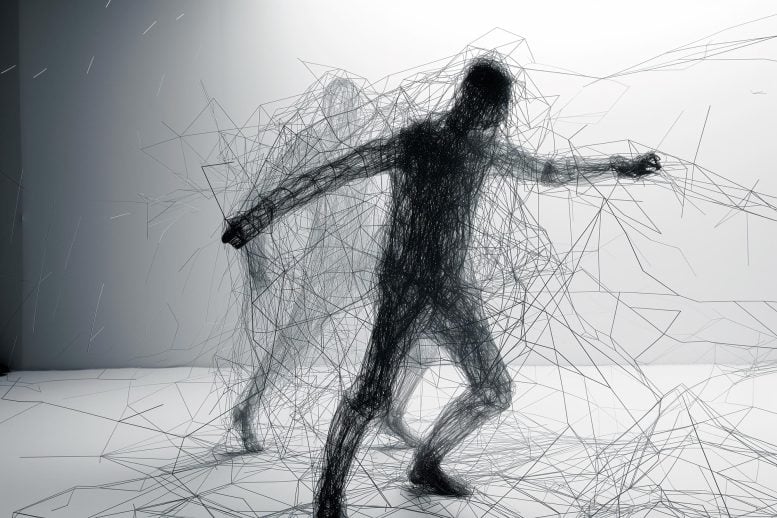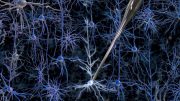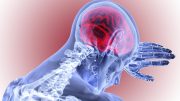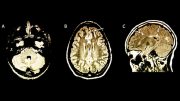
A recent study utilized big data to enhance understanding of motor learning, revealing key insights into how age, gender, and other factors impact motor control. This approach offers a novel perspective, complementing traditional lab-based research. Credit: SciTechDaily.com
Data generated by citizen scientists offer researchers new insight into how people adapt and move differently to correct for movement errors.
A new research study examined the results from data generated by citizen scientists using a simple web-based motor test. The big data approach provides researchers with a unique way to explore how people correct for motor control errors. The resulting insights may one day pave the way for personalized physical therapy or tailor an athlete’s training routine. The results are available in the January 30th issue of the journal Nature Human Behaviour.
Complementing Traditional Lab Studies
“This exploratory approach does not replace lab based studies, but complements them, asking whether motor behavior can generalize to the greater population,” said Jonathan Tsay, assistant professor in the Department of Psychology at Carnegie Mellon University and first author on the paper. “I see this large-scale approach as a way to democratize motor learning research.”

Jonathan Tsay, assistant professor in the Department of Psychology at Carnegie Mellon University. Credit: CMU
Traditionally, motor learning scientists have studied how people learn motor skills in a lab setting using expensive equipment to capture the subtle changes in a person’s movement in response to movement errors. These studies often involve a small number of participants. Whether these results generalize to the larger population remains unknown.
Harnessing the Power of Big Data
Tsay wanted to explore motor skills from a new perspective, using big data. To gather the data, he developed a simple motor-learning assessment that people could take online in the comfort of their homes. The result is a dataset of more than 2,000 sessions from a diverse participant population.
The study can also evaluate different underlying processes in motor learning, that is, the relative contribution of subconscious, implicit motor learning, and conscious, explicit motor learning. With the data in hand, Tsay was able to examine how demographic variables affect the relative contribution of these two learning styles.
The short, at-home test took about eight minutes compared to a normal 80-minute experiment in the lab. Many participants logged back in and contributed multiple sessions to the database, allowing the research team to track changes in motor learning efficiently.
Uncovering New Insights
The potential of the big data lies in a better understanding of variables, like gender, age, visual impairment, and even video game experience, that can impact motor adaptation.
Tsay points to age as an example. It may seem obvious that age would be an important factor affecting motor adaptation, but the effect of age has been mixed in laboratory studies. The confusion may be in part due to the small sample size and the focus on extreme age groups (very young and very old).
Using big data, Tsay and his colleagues were able to examine age as a continuous variable. The results showed how participants modified their strategies to correct for a motor error across the lifespan, with adaptation peaking between 35 and 45 years of age. These adaptations have been missed by previous studies involving only a limited sample size.
“Using machine learning and other techniques, [this approach allowed us] to predict who would be successful at motor learning and what properties — speed of movement and reaction time — are good predictors of success in motor learning during a session,” said Tsay. “The results we found in this exploratory big data manner can be brought back to the lab to do more hypothesis-driven [studies] to find the mechanism behind the finding we see online.”
Challenges and Future Directions
The simple motor learning task was only able to predict about 15% of the variance in the study, which limits the insights that can be drawn from these results. In addition, the motor task was not conducted under an experimenter’s supervision or specifically controlling for parameters, like type of technology and internet speed, that increased noise in the data. Despite these limitations, Tsay still believes this large-scale approach is able to examine this variability in a detailed manner, drawing insights that can be valuable to the motor research community.
“Many, many questions in psychology are amenable to on-line testing, but there are few motor studies,” said Richard Ivry, distinguished professor in psychology at the University of California, Berkeley and co-author on the study. “The NatHumBehav study further adds to our confidence that on-line studies can be very meaningful for studying motor control, and I know that many labs around the world have taken advantage of these tools.”
Reference: “Large-scale citizen science reveals predictors of sensorimotor adaptation” by Jonathan S. Tsay, Hrach Asmerian, Laura T. Germine, Jeremy Wilmer, Richard B. Ivry and Ken Nakayama, 30 January 2024, Nature Human Behaviour.
DOI: 10.1038/s41562-023-01798-0
Tsay and Ivry were joined by Hrach Asmerian and Ken Nakayama at University of California, Berkeley, Laura Germine at Harvard Medical School, and Jeremy Wilmer at Wellesley College on the study.
The study received funding from the National Institute of Health National Institute of Neurological Disorders and Stroke.









Be the first to comment on "Clicks and Tricks: How Online Tests Are Changing Motor Learning"